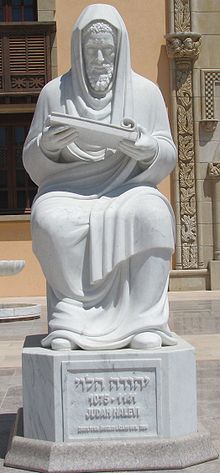I approached my
trip to Berlin with a mélange of emotions. I was uncertain how I would feel
about being in Germany. I was curious how I would feel walking the streets of a
city that holds so much dark baggage for the Jewish people. I was curious to
explore a place entirely new to me. And I was eager to join rabbinic colleagues
in learning about the Syrian refuge crisis from those on the frontline of
addressing that crisis in Berlin. While my trip was unexpectedly shortened, the
few days I spent in Germany were eye-opening in a number of ways. In my next
few posts I will explore some of these, starting with an initial impression
from my first visit in Berlin.
 Taking advantage
of a better airfare, I arrived in Berlin with a day-and-a-half to explore prior
to start of our Rabbinic mission. Several years ago, I was introduced to the
work of Rick Steves, his guidebooks, blogs, TV show, and for my purpose, his
free downloadable podcast walking tours! Having used his
resources in other cities, I set out to explore Berlin with his informative,
and entertaining company. I spent some 6 or so hours walking around the city,
exploring important sites, and getting a decent overview of Berlin.
Taking advantage
of a better airfare, I arrived in Berlin with a day-and-a-half to explore prior
to start of our Rabbinic mission. Several years ago, I was introduced to the
work of Rick Steves, his guidebooks, blogs, TV show, and for my purpose, his
free downloadable podcast walking tours! Having used his
resources in other cities, I set out to explore Berlin with his informative,
and entertaining company. I spent some 6 or so hours walking around the city,
exploring important sites, and getting a decent overview of Berlin.
I’ll not bore you
with details. Rather, I begin with a profound impression which, with a week’s
distance, I’ve been able to sort through more fully. I’ve often heard from
other Jewish visitors to Germany that they found themselves looking at the
people on the streets, wondering where they might have been, and what they have
been doing during World War II. This only crossed my mind in
retrospect. I was struck by the number of times I came face-to-face with
monuments, memorials and exhibitions in which Germany accepts responsibility
for the darkness of its actions in the 20th century.


Nowhere was this more in evidence than at the Memorial to the Murdered Jews of Europe. As Rick Steves explains, in naming the site as being dedicated to “the Murdered Jews of Europe,” Germany chose to own its actions, and responsibility for those actions, by naming the crime committed by nation and her people during the years leading up and during the War.white-washed at this memorial. At Berlin’s Topography of Terror Memorial and Museum, I witnessed acceptance of the crimes against other groups, also targeted by the Third Reich. These were but two of the many sites at which I found myself noting the openness and directness with which Germany seems to have chosen to deal with the ugly and horrific stains on its past.
Even more
powerful, as our Rabbinic mission began, it seemed to me that the response to
the current refugee crisis cannot be wholly detached from Germany’s crimes in
the 20th century. It struck me, and many of my colleagues, that the open
embrace and efforts at rescuing these 21st century refugees, fleeing persecution
and certain death in their native homeland, must to some degree be viewed
against the backdrop of Germany’s crimes against humanity some seven decades
ago.
 To be sure, the
response to the refugee crisis in complicated. It is viewed in different ways
across German society. Yet, the juxtaposition of memorials and sites recounting
Germany’s horrific policies and deeds in the 1930’s and 40’s seemed to me, to
reflect a measure of national self-awareness and an attempt to learn from the
country’s past. One case in point as a remaining section of the Berlin Wall, on the back of
which is displaying a graphic and haunting photo-essay of the current conflict
in Syria which tells the stories of many of refugees now seeking asylum in
Germany. Reading the refugees’ stories, and visiting the memorials I could not
help but reflect on what I was seeing against the backdrop of what is unfolding
across our country. My abbreviated time in Berlin, the sites I saw and the
stories I heard gave me pause to wonder whether, as Americans, we have learned
sufficiently from our own past?
To be sure, the
response to the refugee crisis in complicated. It is viewed in different ways
across German society. Yet, the juxtaposition of memorials and sites recounting
Germany’s horrific policies and deeds in the 1930’s and 40’s seemed to me, to
reflect a measure of national self-awareness and an attempt to learn from the
country’s past. One case in point as a remaining section of the Berlin Wall, on the back of
which is displaying a graphic and haunting photo-essay of the current conflict
in Syria which tells the stories of many of refugees now seeking asylum in
Germany. Reading the refugees’ stories, and visiting the memorials I could not
help but reflect on what I was seeing against the backdrop of what is unfolding
across our country. My abbreviated time in Berlin, the sites I saw and the
stories I heard gave me pause to wonder whether, as Americans, we have learned
sufficiently from our own past?
More about the
relief efforts and the response of Germans will follow in part 2.







